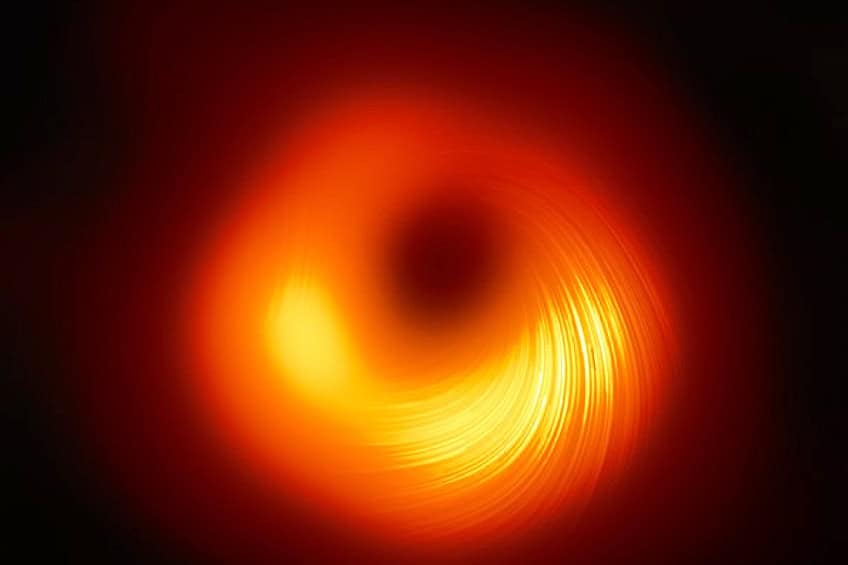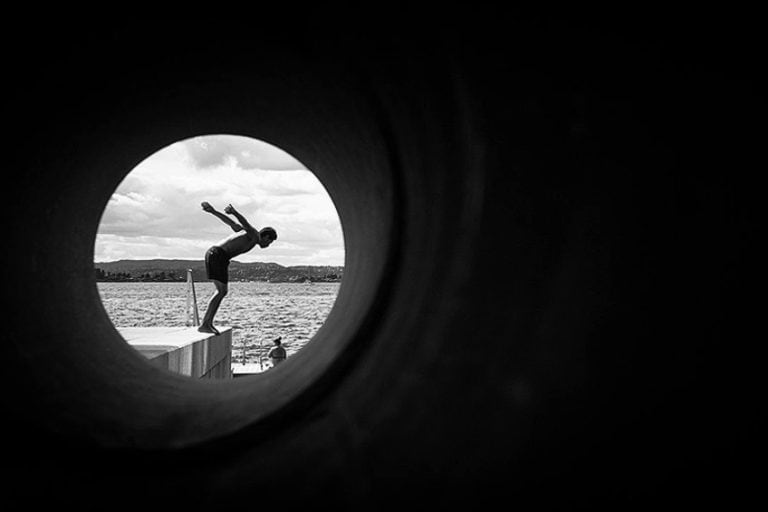Black Hole Picture – A Glimpse of the Unseen
In April 2019, humanity witnessed a groundbreaking moment in astrophysics with the release of the first-ever image of a black hole. This historic achievement, captured by the Event Horizon Telescope (EHT) collaboration, provided a visual glimpse into one of the most enigmatic and fascinating objects in the universe. Located in the heart of the galaxy M87, this black hole image not only expanded our understanding of these cosmic phenomena but also opened new avenues for exploring the fundamental nature of space, time, and gravity.
Key Takeaways
- A new black hole image provides visual evidence of these cosmic entities within our galaxy.
- Advanced telescope networks overcome imaging challenges to capture black holes’ event horizons.
- The recent imagery of Sagittarius A* enhances our understanding of supermassive black holes and their environments.
Imaging Techniques and Challenges
The capture of a black hole image stands as a monumental achievement in modern astrophysics, providing visual confirmation of objects whose existence was once only theorized. The Event Horizon Telescope Collaboration, utilizing a planet-scale network of radio telescopes, captured the second image of a black hole and the first from our galaxy, following their groundbreaking 2019 feat. This new addition offers an unprecedented look at the supermassive black hole known as Sagittarius A* located at the Milky Way’s center.

The complexity involved in imaging black holes is immense due to their nature; black holes do not emit light, making them invisible against the dark backdrop of space. Specialized imaging techniques involving the synchronization of multiple telescopes are required to achieve sufficient resolution to detect the event horizon’s silhouette against the glowing accretion disc. The recent image provides insights into the characteristics of black holes and their behavior, deepening our understanding of these mysterious cosmic entities.
Event Horizon Telescope Collaboration
The Event Horizon Telescope is not a single instrument but an array comprising radio telescopes across multiple continents, functioning as a planet-sized telescope through a technique called Very Long Baseline Interferometry (VLBI).
This collaboration combines signals from each location to enhance the resolution significantly. Targeting the supermassive black holes, such as Sagittarius A* at the center of our galaxy and the one in Messier 87, the EHT achieves the angular resolution necessary to observe the event horizon.
Primary challenges for the EHT include:
- The synchronization of data across vast geographical distances.
- The need for clear skies at all telescope locations simultaneously.
- The processing of colossal data volumes generated from each telescope.
Algorithmic Advancements
The imaging of black holes necessitates sorting and synchronizing data, which demands sophisticated computational algorithms. These algorithms not only handle the amalgamation of data from disparate telescopes but also address the variability in atmospheric conditions and instrumental precision. Utilizing computational imaging innovations ensures that the data converges into coherent and detailed snapshots of black holes. Key algorithmic developments involve:
- Overcoming the scattering of radio waves caused by the interstellar medium.
- Filtering noise and enhancing signal fidelity to reveal the black hole’s structure.
- Adapting to the dynamic change in the target’s appearance due to its surrounding accretion disk.

Analysis of the Recent Black Hole Image
The latest image of a black hole is a significant advancement in astrophysics, showcasing features of the M87 galactic core and underscoring the importance of peer-reviewed dissemination in scientific journals.
Features of M87
The Messier 87 (M87) black hole image represents a milestone in visualizing celestial phenomena, attributed to the Event Horizon Telescope (EHT) Collaboration. The image is a testament to the predictions of general relativity, presenting a vivid silhouette known as the shadow, circumscribed by a bright accretion disk. Distinct features in the upgraded image show a more pronounced darkness at the center, enveloped by a luminous, flaring ring which delineates the event horizon—the region beyond which light cannot escape the immense gravitational pull.

This enhanced image captures finer details that hint at the dynamic environment surrounding the supermassive black hole. Scientists confirm that M87’s black hole exhibits typical properties expected from theoretical models, such as the photon ring, an area where gravity bends light into a bright circular pattern.
The Role of Scientific Journals
The dissemination of these findings through respected outlets like The Astrophysical Journal Letters ensures a rigorous review process, lending credibility and allowing for scholarly scrutiny. Such journals serve as gatekeepers for the scientific community, providing a platform for transparent and methodical presentation of research. Publication in journals like the Astrophysical Journal Letters reinforces the validity of the observations and methods used to capture the black hole image.
This peer-reviewed process helps to establish a consensus on interpretations that align with the principles of general relativity, and to document the iterative advancements in understanding black holes.
Implications for Astrophysics and Cosmology
Capturing images of black holes stands as a transformative achievement in astrophysics, offering the chance to validate existing theories of gravity and enhance the understanding of galactic behaviors and development.

Testing Theories of Gravity
The direct imagery of black holes serves as a critical tool for examining the theories that describe gravity’s behavior in extreme environments. Einstein’s theory of general relativity predicts specific gravitational phenomena around black holes, and these images allow scientists to verify these predictions with extraordinary precision.
They compare observed data to simulations, assessing the shape of the event horizon, the nature of light bending, and the dynamics of accretion disks.
Advancing the Study of Galaxies
Black hole observations provide valuable insights into the role these massive entities play in galaxy formation and evolution:
- Galactic nuclei: Black holes, especially those at the center of galaxies like M87 and the Milky Way, influence the dynamics of their host galaxies. The images contribute to understanding how energy and matter interactions in galactic nuclei shape star formation and galaxy cluster behaviors.
- Star formation: By observing how black holes interact with their surroundings, scientists gain understanding into the interplay of gravitational forces and the interstellar medium, which can trigger or inhibit star formation within galaxies.
- Early universe: The study of black holes can also shed light on the conditions of the early universe, potentially illuminating the processes that led to the formation of the first stars and galaxy clusters.

The recent image of a black hole represents a triumph of human ingenuity and collaboration in the field of astrophysics. Its unveiling marks a pivotal moment in our quest to unravel the mysteries of the cosmos. As we continue to delve deeper into the nature of black holes and their role in shaping the universe, this historic achievement serves as a testament to the power of scientific exploration and the boundless curiosity that drives us to push the boundaries of knowledge. The journey to understanding these cosmic giants is far from over, promising even more awe-inspiring discoveries in the realm of black hole physics in the years to come.
Frequently Asked Questions
How Was the Recent Black Hole Image Captured?
The image was captured by the international collaboration of researchers using the Event Horizon Telescope (EHT), which is a network of radio telescopes distributed across the globe. Their efforts allow for observations at a wavelength conducive to viewing the black hole’s silhouette.
What Are the Major Discoveries from the Latest Black Hole Photo Taken by NASA?
The latest black hole photo has provided astronomers with deeper insights into the complex dynamics near a black hole’s event horizon, especially the black hole’s shadow and the surrounding accretion disk.
What Technology Did the Event Horizon Telescope Use to Photograph the Black Hole?
The Event Horizon Telescope utilized a technique known as very-long-baseline interferometry (VLBI), which synchronizes telescope facilities worldwide to form a virtual Earth-sized telescope and provides unprecedented resolution.
Which Black Hole Was Photographed Most Recently by Astronomers?
Astronomers recently photographed the black hole at the center of our Milky Way galaxy, followed by an image of the supermassive black hole in the Messier 87 (M87) galaxy.
How Does the Recent Black Hole Image Compare to the First One Captured in 2019?
The recent black hole image from our galaxy confirms the presence of a compact radio-emitting region consistent with theoretical expectations, while the first image captured in 2019 of the M87 black hole provided a more distant but also more massive perspective.
Isabella studied at the University of Cape Town in South Africa and graduated with a Bachelor of Arts majoring in English Literature & Language and Psychology. Throughout her undergraduate years, she took Art History as an additional subject and absolutely loved it. Building on from her art history knowledge that began in high school, art has always been a particular area of fascination for her. From learning about artworks previously unknown to her, or sharpening her existing understanding of specific works, the ability to continue learning within this interesting sphere excites her greatly.
Her focal points of interest in art history encompass profiling specific artists and art movements, as it is these areas where she is able to really dig deep into the rich narrative of the art world. Additionally, she particularly enjoys exploring the different artistic styles of the 20th century, as well as the important impact that female artists have had on the development of art history.
Learn more about Isabella Meyer and the Art in Context Team.
Cite this Article
Isabella, Meyer, “Black Hole Picture – A Glimpse of the Unseen.” Art in Context. April 17, 2024. URL: https://artincontext.org/black-hole-picture/
Meyer, I. (2024, 17 April). Black Hole Picture – A Glimpse of the Unseen. Art in Context. https://artincontext.org/black-hole-picture/
Meyer, Isabella. “Black Hole Picture – A Glimpse of the Unseen.” Art in Context, April 17, 2024. https://artincontext.org/black-hole-picture/.









